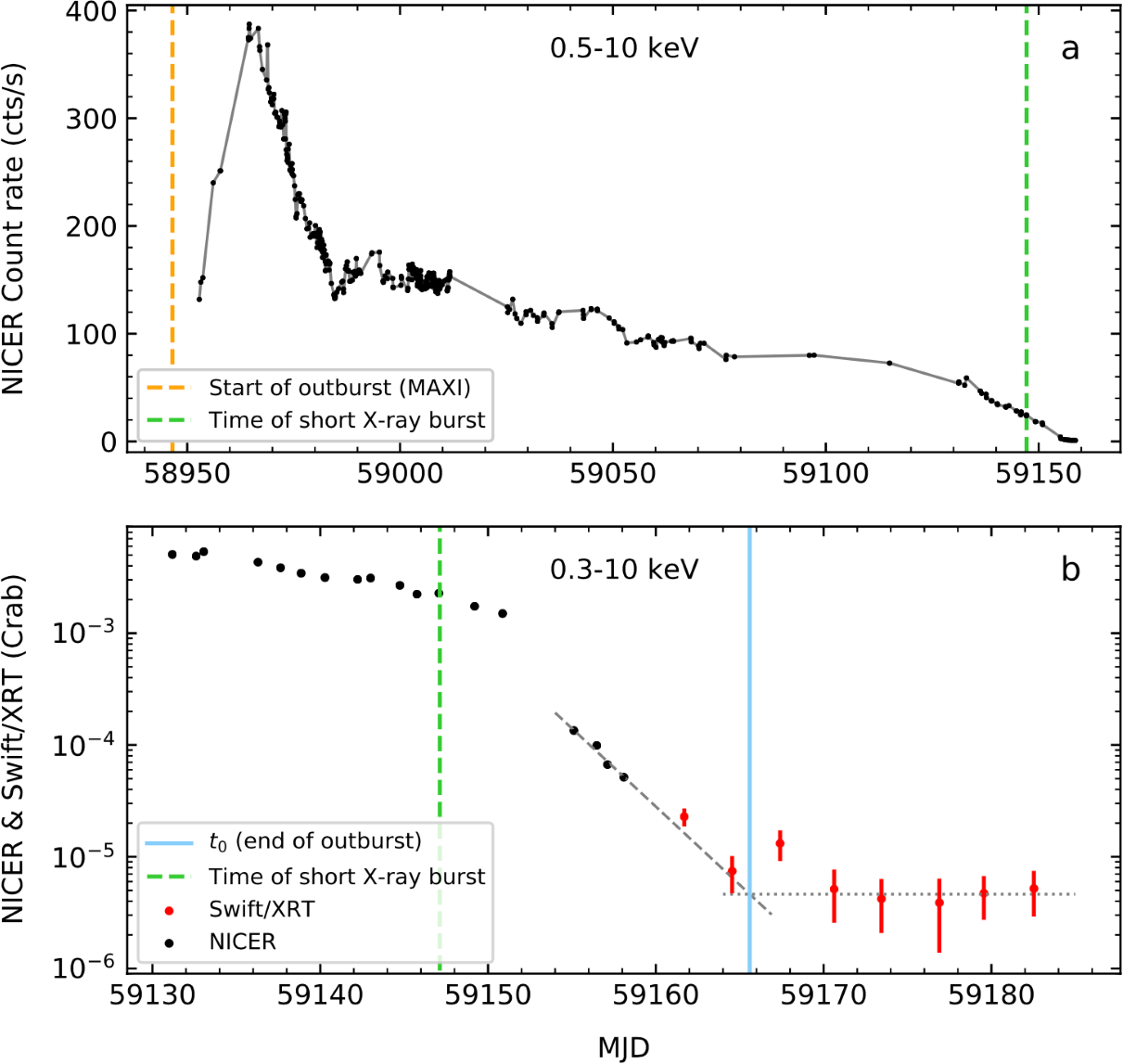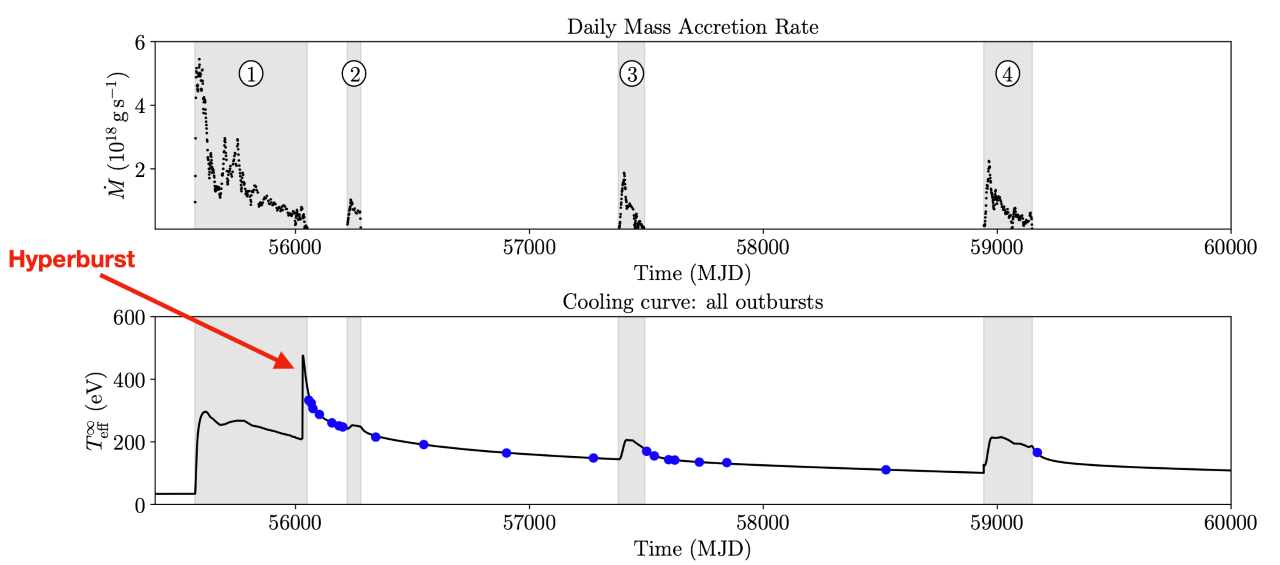NICER / ISS Science Nugget
for February 17, 2022
NICER Helps Solve a Hot Neutron Star Puzzle
Understanding the ultra-dense matter inside neutron stars remains a key science objective for NICER. One way to study its properties is to see how the outer crust of a neutron star responds to episodes of mass accretion. Matter that is accreted from a companion star compresses the layers beneath it, inducing a variety of nuclear processes that release heat into the crust. After an accretion episode has ended, one can study the subsequent cooling of the neutron star in X-rays, which typically takes months to years before thermal equilibrium is established again.
Careful modeling of the star's thermal evolution provides valuable information on the composition of the crust. This has now been done for about a dozen systems, but one stands out: MAXI J0556-332. After its 2011-2012 outburst, the neutron star in this system was found to be much hotter than those in other systems. For some reason, the amount of heat released per unit of accreted mass was much higher in MAXI J0556-332. Surprisingly, observations of two subsequent outbursts of MAXI J0556-332, in 2012 and 2016, suggested much lower crustal heating, in line with other sources, adding to the puzzle. More data would be needed from future outbursts to investigate further.
Such an opportunity arose in 2020, when JAXA's MAXI payload detected a fourth outburst. NICER initiated dense X-ray monitoring with two goals: first, to trace how much matter was being accreted and, second, to flag the end of the accretion episode. The latter enabled temperature measurements soon after the outburst with the X-ray telescope (XRT) onboard NASA's Swift observatory.
The temperature measurements obtained after the 2020 outburst again suggested a normal accretion-induced heating scenario, consistent with the second and third outbursts. A new investigation has now offered an explanation for the high temperatures observed uniquely after the first outburst. Instead of atypical heating by accretion, it appears that the crust was heated instead from within, by a giant thermonuclear explosion -- a "hyper-burst" much more powerful than the nuclear explosions typically observed from accreting neutron stars. The latter (so-called Type I X-ray bursts) fuse hydrogen and helium, and, in rarer circumstances, also burn carbon nuclei in events known as "superbursts." The proposed once-in-a-millennium hyper-burst in MAXI J0556-332 in 2011 is thought to have fused oxygen and neon, and likely occurred at a depth of about 500 meters below the neutron star's surface; it was not directly observed in X-rays, but it did significantly heat the outer crust. The inferred time of the hyper-burst is marked with an arrow in the image below. The paper describing this work, led by Dany Page (UNAM) and collaborators, was accepted this week for publication in The Astrophysical Journal.


Figure: Left: (a): NICER light curve of the 2020 outburst of MAXI J0556-332. The start of the outburst (as observed with MAXI) and the occurrence of a small Type I X-ray burst are marked with dashed orange and green lines, respectively. (b) NICER (black) and Swift (red) coverage of the decay into quiescence. Each data point represents the background-subtracted 0.3-10 keV count rate in Crab units. The blue line indicates the estimated end of the outburst (12 Nov 2020), obtained by finding the intersection between an exponential fit to the last four NICER and first two Swift data points, and a constant fit to the last five Swift data points. Right: A successful model for the heating and cooling history of MAXI J0556-332. The upper panel shows the whole temporal evolution, spanning more than 10 years and four accretion outbursts (grey shading), of the simulated daily mass accretion rate, Ṁ. The lower panel shows the simulated (black trace) and measured (blue points) red-shifted effective temperature, T∞ eff.
<< Previous
Main Index
Next >>